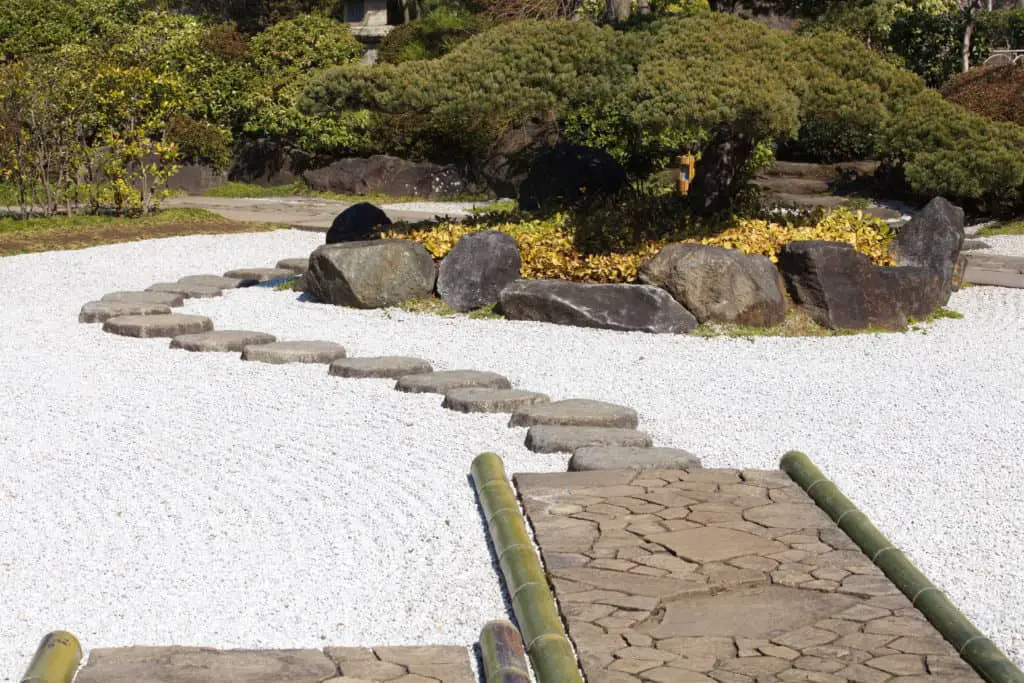
Trees are magnificent – big and strong, some even massive and legendary, like Redwood trees. For ordinary trees around your home, adding landscaping elements and layered stonework around their base is a great way to make them stand out AND protect any surface roots!
You can use stones from the yard or purchase stones such as river rock, granite, quartz, brick, or other rock-like materials. Here’s how to get started with some sample rock designs to inspire you.
(As an Amazon Associate, I earn from qualifying purchases.)
1. Determine where the tree’s roots are
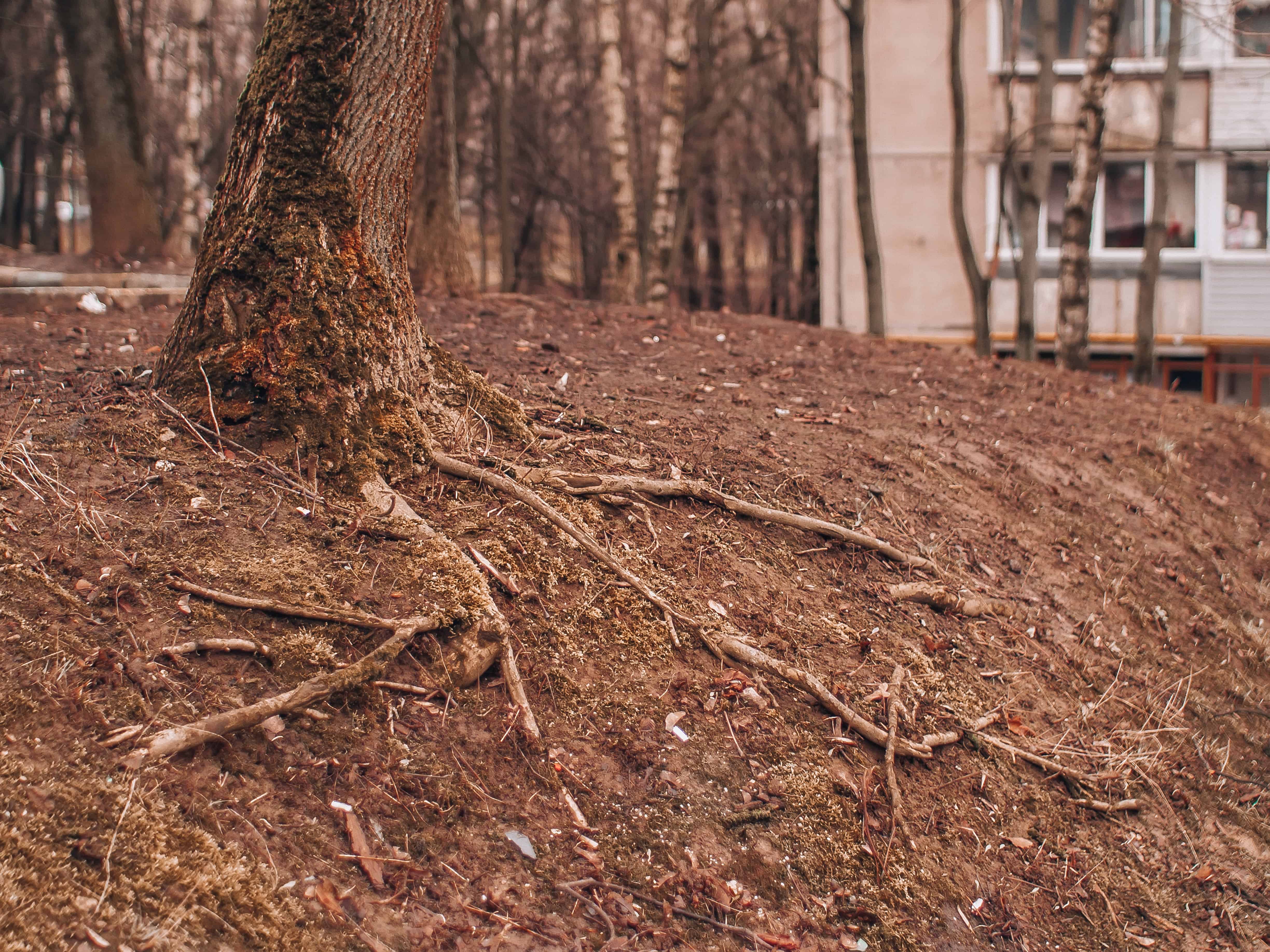
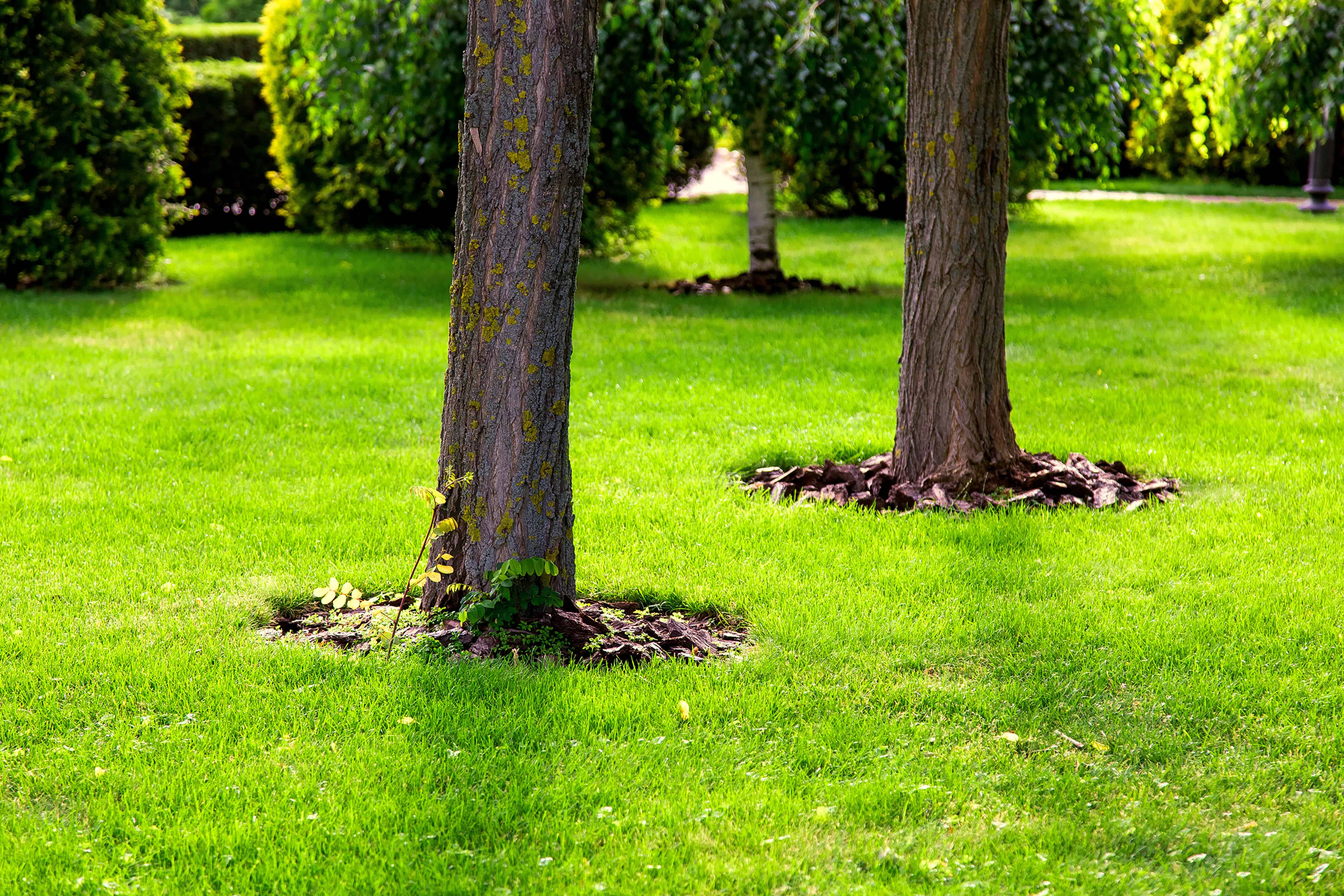
Knowing your land’s soil type, your tree’s species, age, the size of its roots, and the growth behavior of its root system will help you avoid accidentally killing off your tree. For example:
If there are exposed tree roots on the surface, you need to protect these from getting damaged. So it would be better to lay a rock border around the tree roots on the surface with added gravel mulch over the bare soil and roots. It’s also advisable not to have any plants grown around this exposed roots area. There will be a nutrition competition between the tree and the smaller plants.
But for tree roots below the surface, you can either do a rock border on the surface or dig a trench for a leveled rock border around the tree. It can be hard to gauge whether the tree has shallow or deep roots but, if you spend just a little time before digging you can avoid knicking the roots.
Luckily, you can approximately gauge the underground root network with a bit of measuring. Here’s how you can do this:
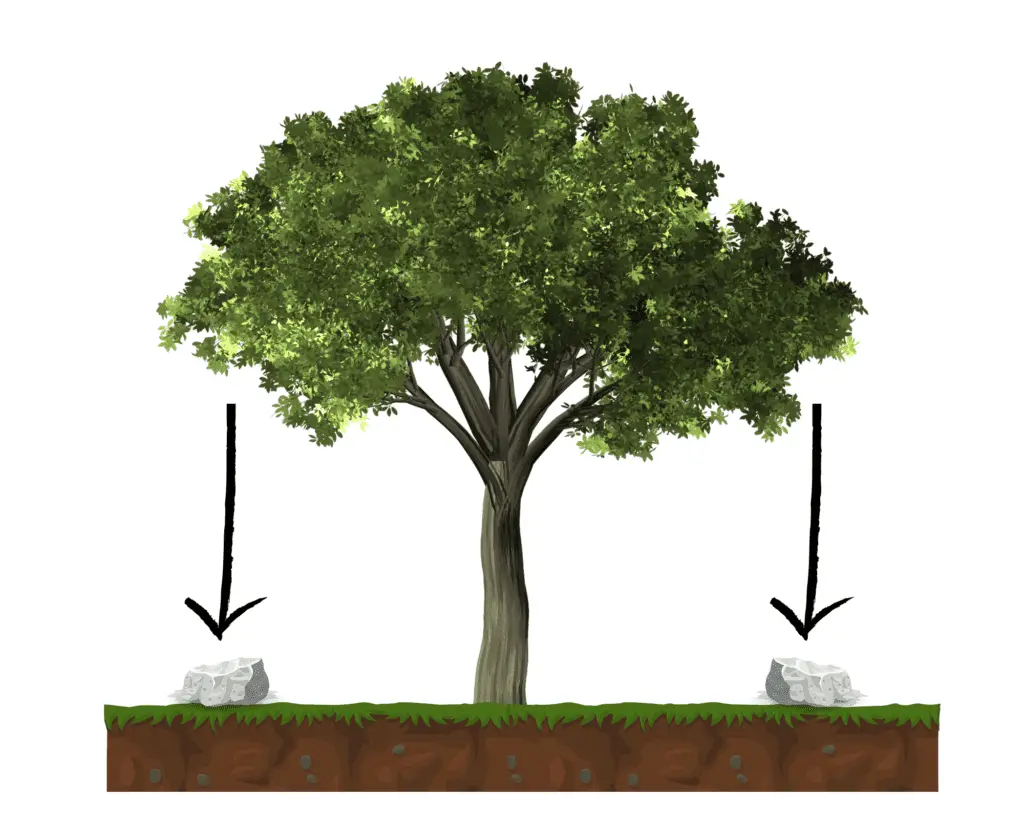
1. Take note of the end tips of the largest branches that stretch farther than the rest; mark this down on the ground with a rock or anything you have on hand. Aim to get about 4-6 points around the tree.
2. Using a rope, join the points to form a circle around the tree. The root vicinity lies within this circle and serves as a guideline. By placing your stone border outside of this circle you avoid disrupting the roots underneath.
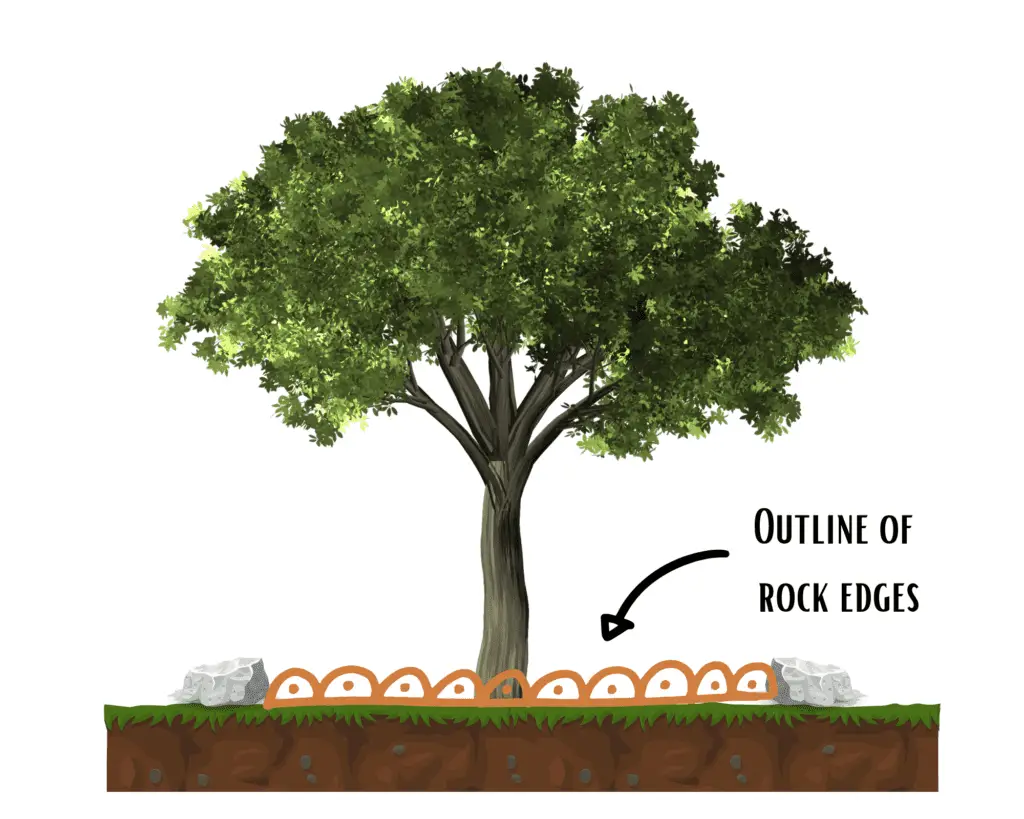
But as I mentioned, this is an approximation. There’s every chance that your tree’s root extends about 2-3 inches away from the supposed guideline, which is why you’ll have to be careful during the digging process.
2. Lay Down Landscape Fabric to Suppress Weed Growth
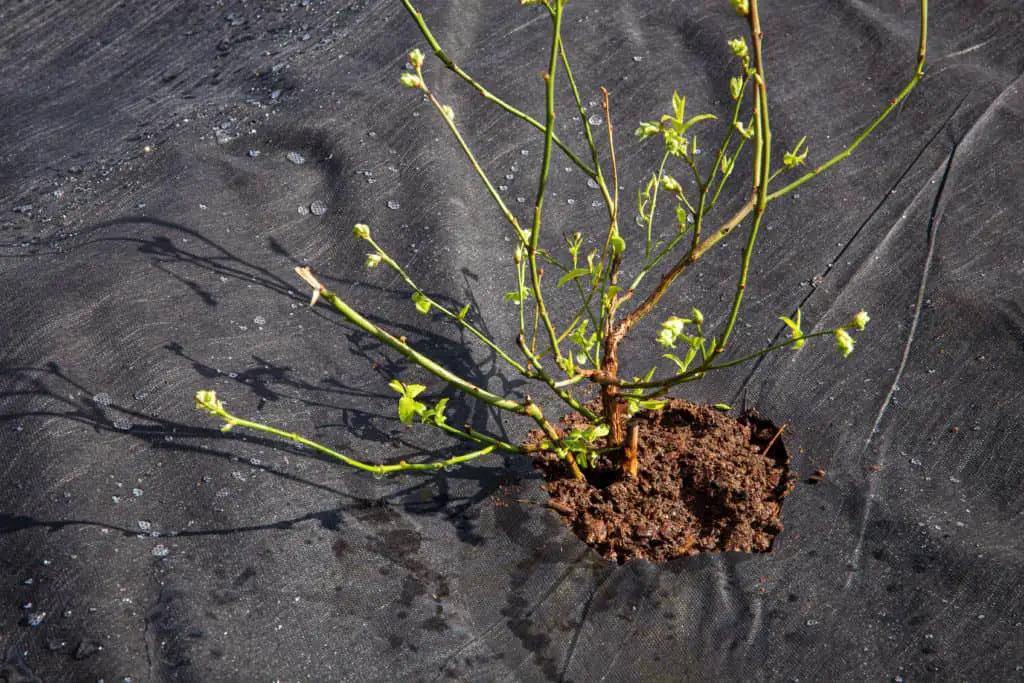
When choosing the suitable landscape fabric to place over the bare soil and around the tree, you want to make sure to get something that is porous and not too thick. The roots still need to breathe and get their much-needed water, so you don’t want to suffocate the soil with plastic sheeting or very thick landscape fabrics. Yes, you might still end up with some weeds sprouting up here and there, but you can very quickly pull them out when they do pop up. Plus, let’s be honest, using landscape fabric is both cost-effective and safer than using herbicides every month to keep weeds from growing.
Prepare the following items:
- Landscape fabric (Amazon link)
- Landscape staples (Amazon link)
- A measuring tape
Here’s how you should set up your landscape fabric:
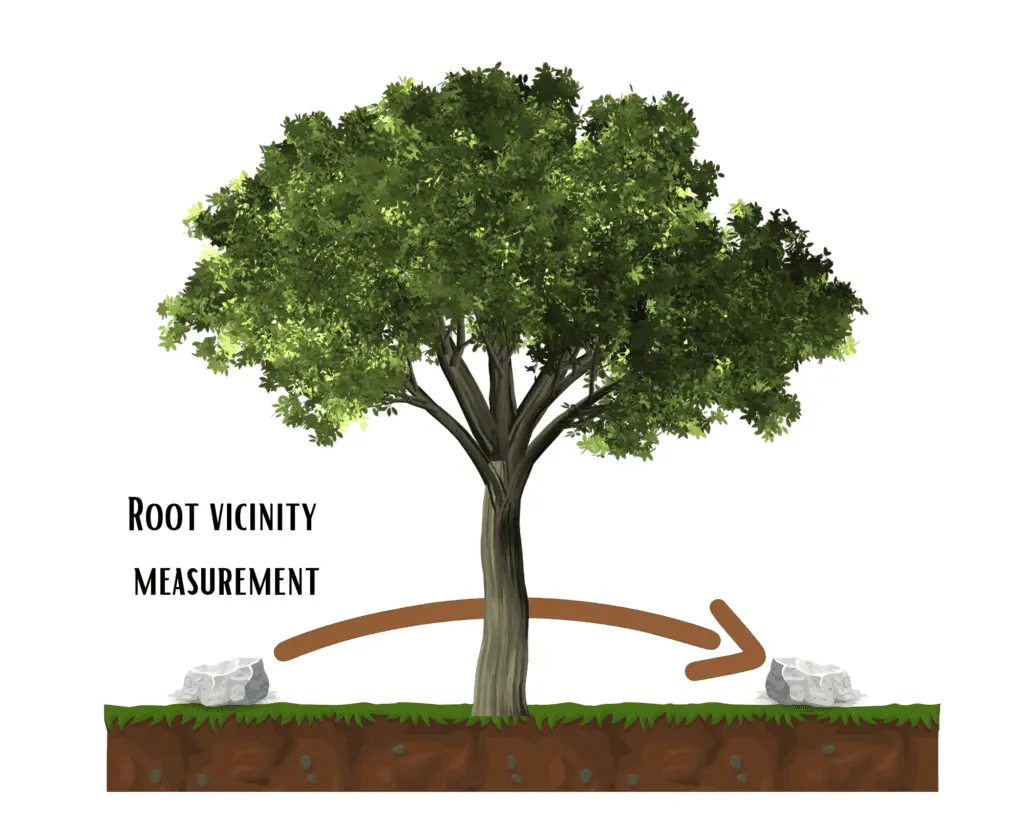
1. Take the diameter measurements down of the root vicinity and the tree trunk.
2. Add 2-3 inches to the measurements to give the tree trunk some space around it for bare soil to be exposed, and give yourself some excess fabric ends to staple down.
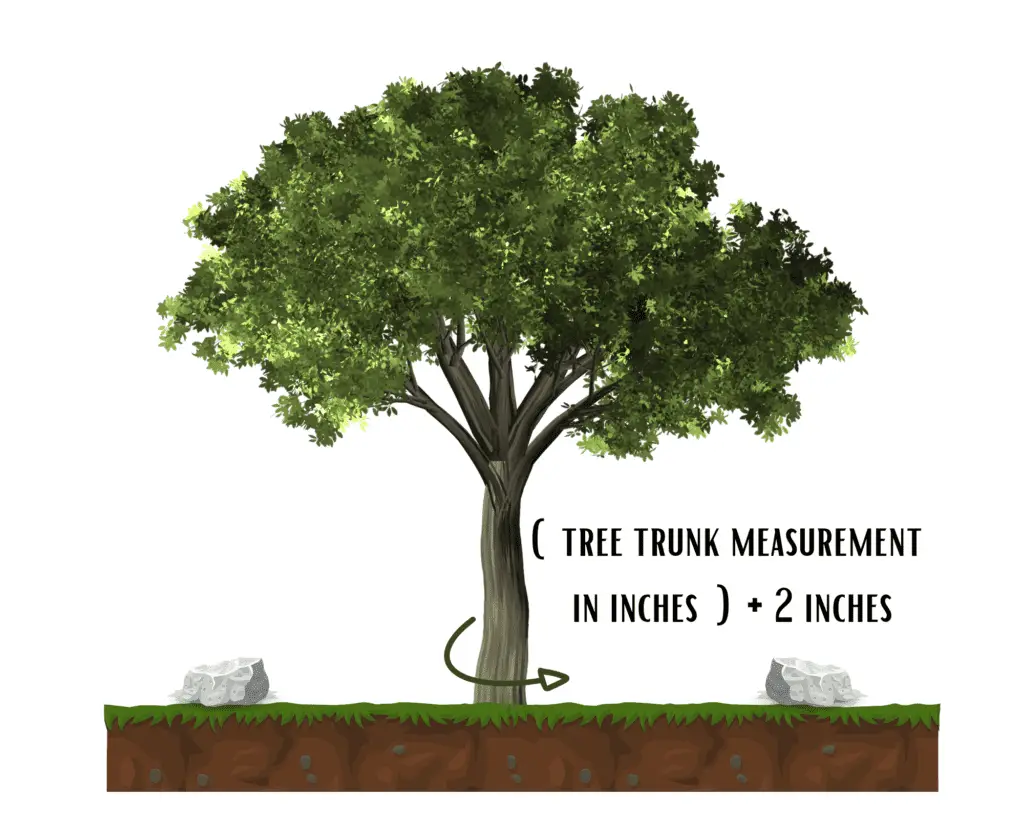
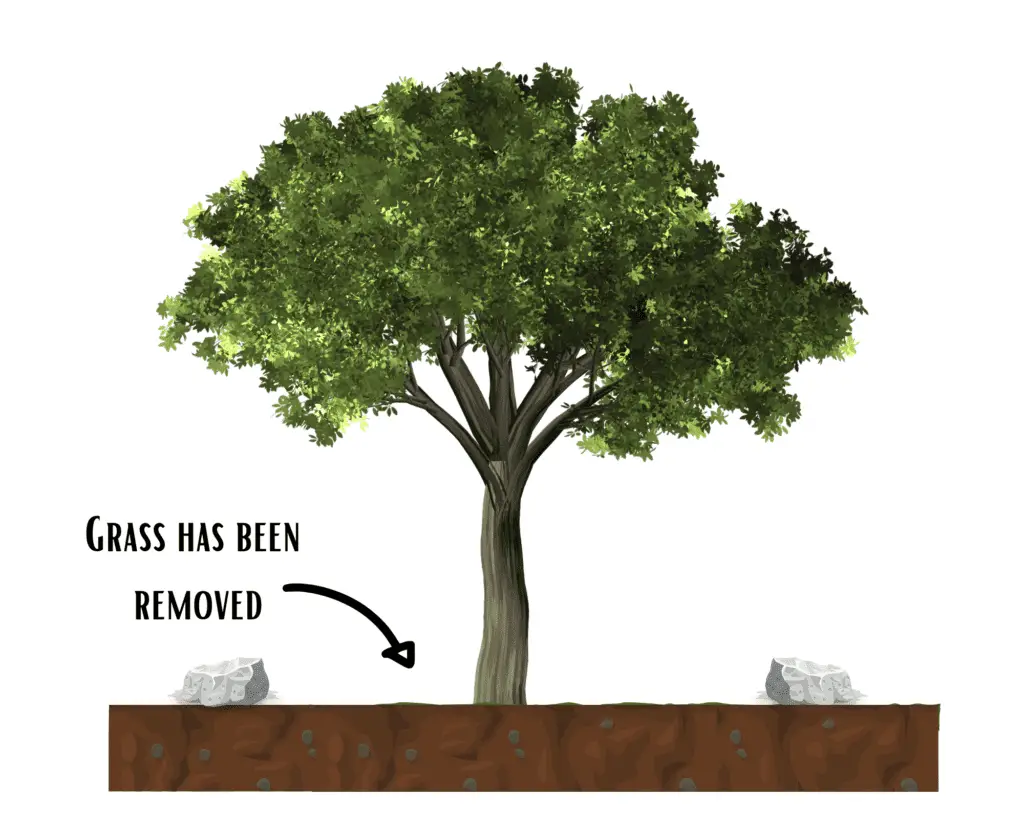
3. Clear any debris, grass, or plants around the tree trunk where the landscape fabric will be laid. Make sure the ground is even, and if there is a tree root in the way, mark on the material, so you avoid covering it.
4. Place the landscape fabric around the tree and secure the ends with landscape staples. Alternatively, you can dig a trench outside the root vicinity and tuck the excess ends in the soil.
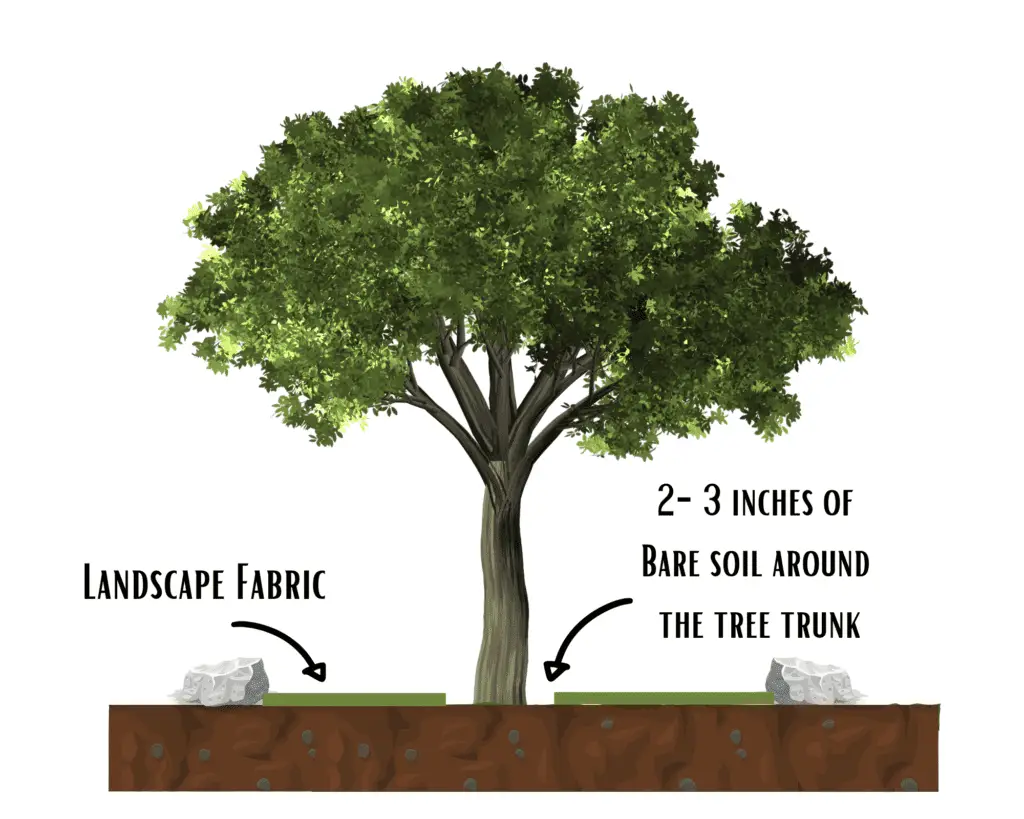
3. Stack Levelled Stones Around the Tree with Gravel Mulch Inside the Border
There are two ways you can landscape around your tree with rocks:
A. Surface rock decoration. After you laid down the landscape fabric, you can simply stack your chosen rocks however you like on top of the soil. Here are a few examples to choose from:
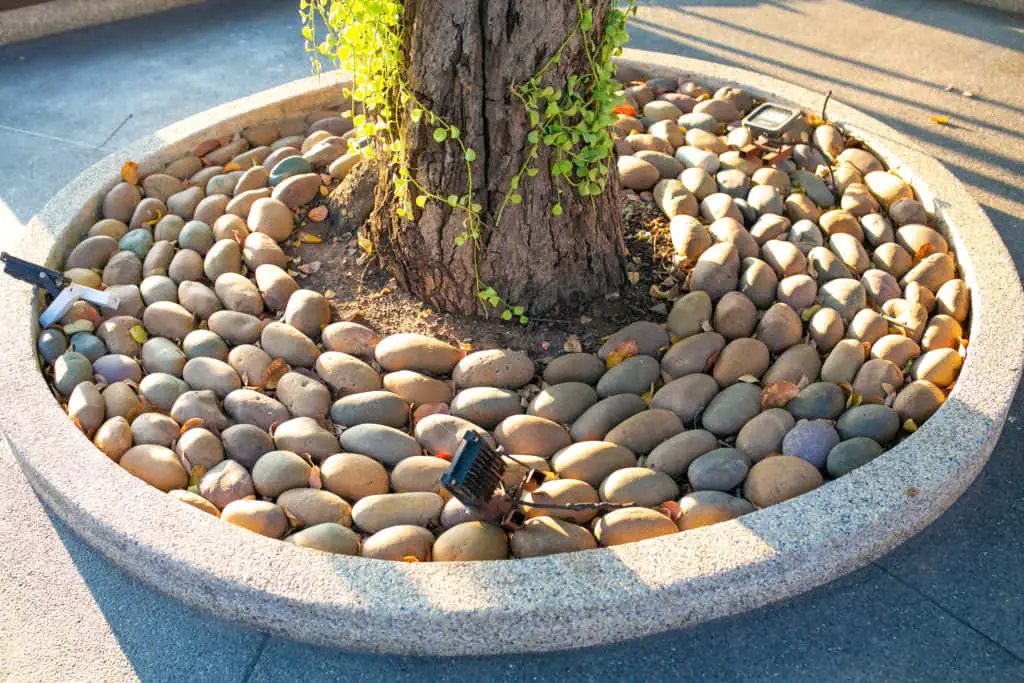
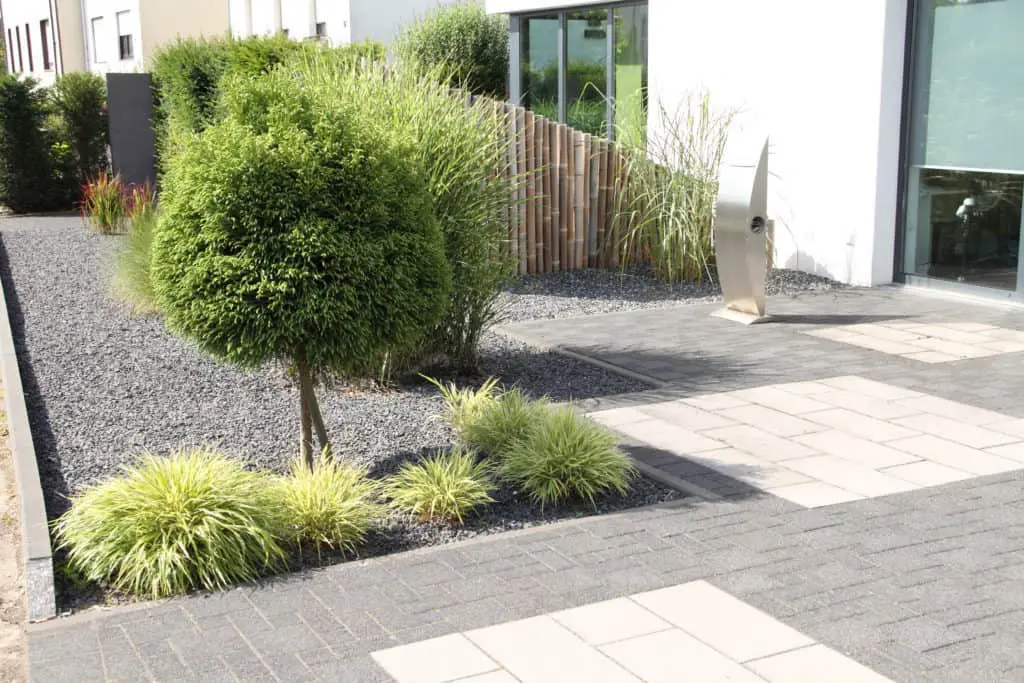
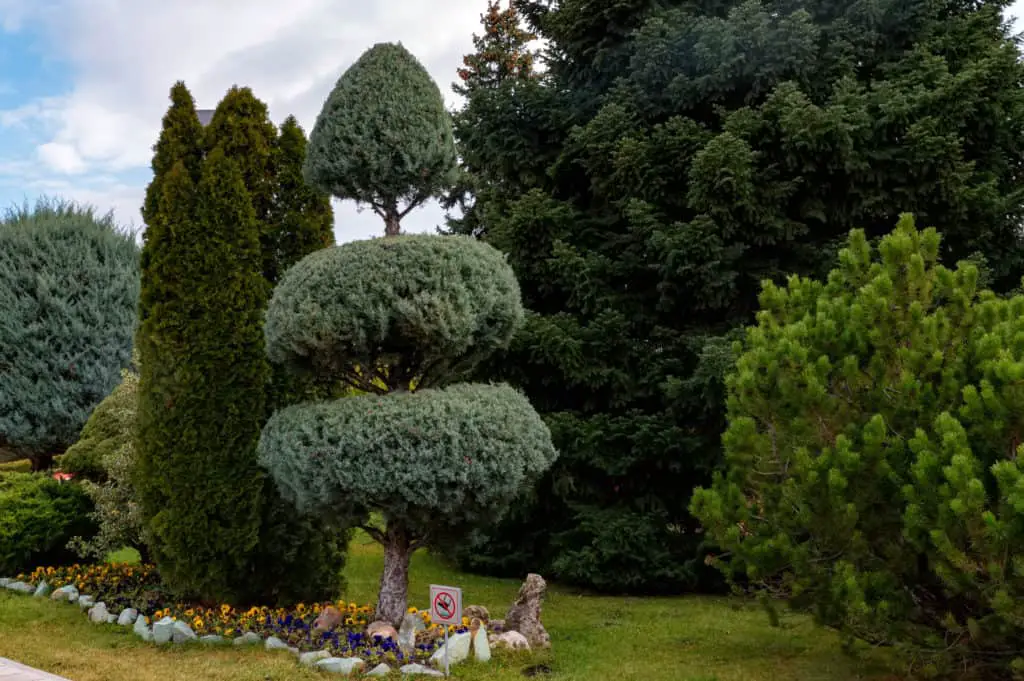
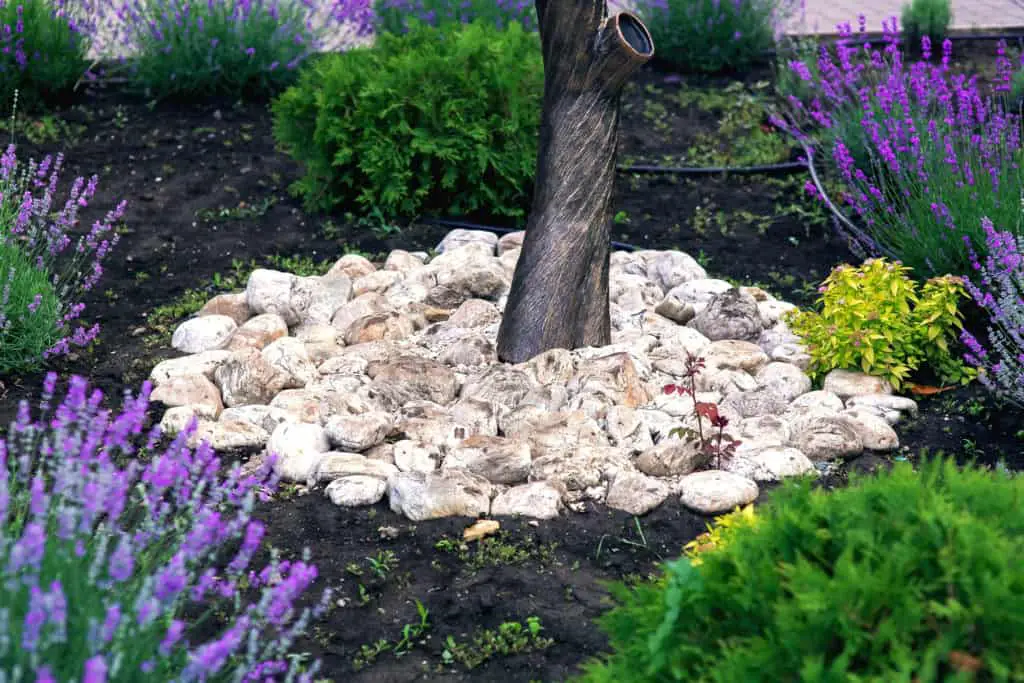
B. Underground stonework border. Unlike the first method, this one requires a bit of digging.
Prepare the following items:
- A spade
- About 90+ of your chosen rock edgers (Note: this is a rough estimation. Adjust your quantity as needed)
- About 10 lbs of gravel mulch (Amazon link)
- A carpenter level (Amazon link)
- Optional: a rubber mallet (Amazon link)
Here’s how you can get started:
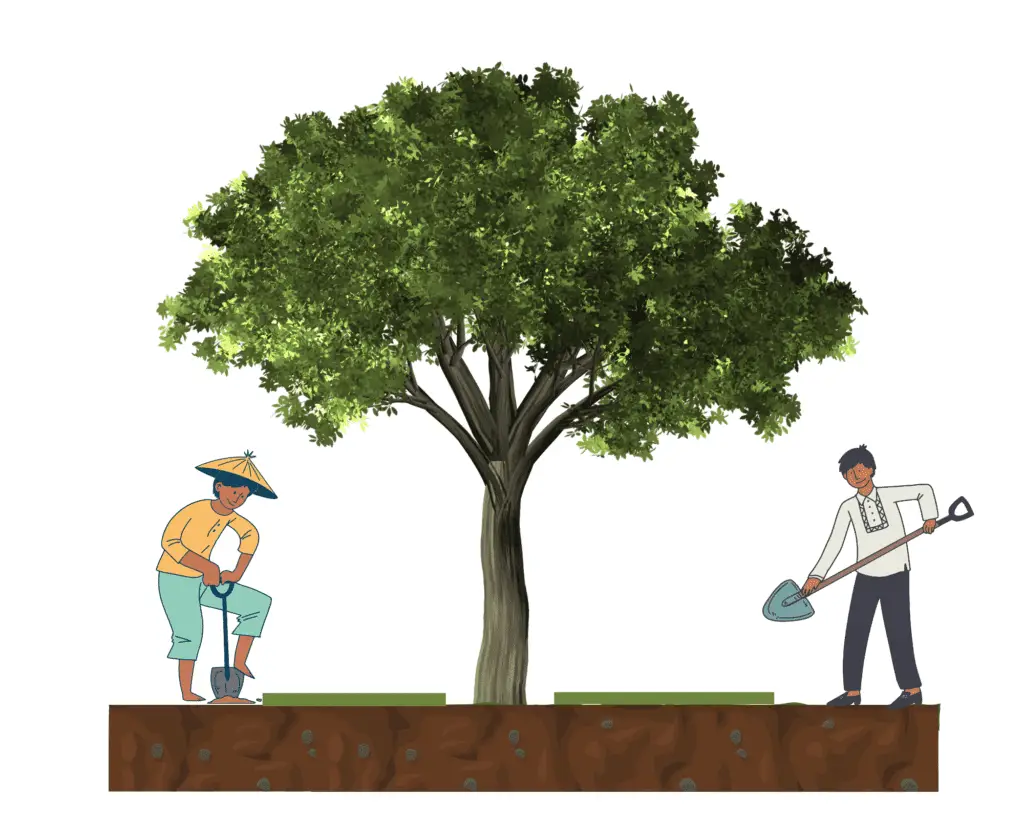
1. Remember the root vicinity you marked earlier? Dig a trench outside this guideline about 2-3 inches deep and wide enough to fit your stones. Be careful not to cut into tree roots during this step. Note: If you hit any resistance, that’s probably a tree root. Adjust your guideline again to avoid cutting into the roots.
Optional: If you haven’t stapled down your landscape fabric at this stage, you can tuck the excess ends into the trench and secure it with a thin layer of gravel mulch.
2. Place the first layer of stones at the bottom, making sure it is leveled and evenly spaced in between. Note: Use uniform, rectangular stones to keep your structure stable and a rubber mallet to settle the stones in.
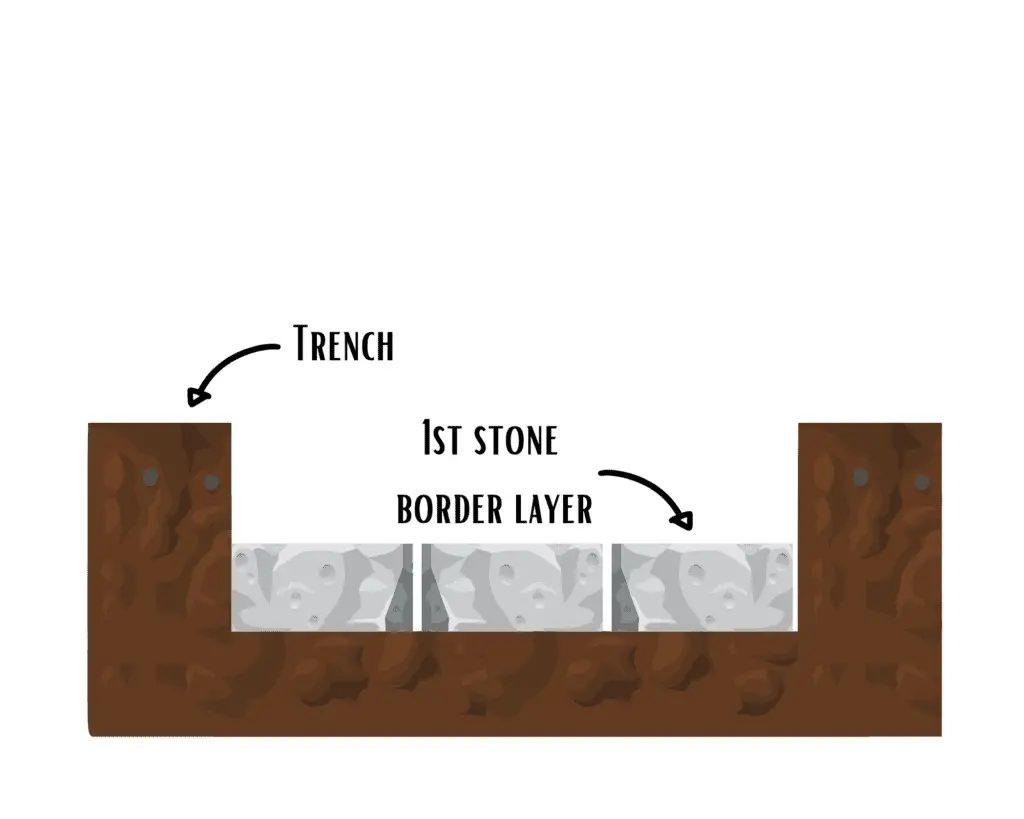
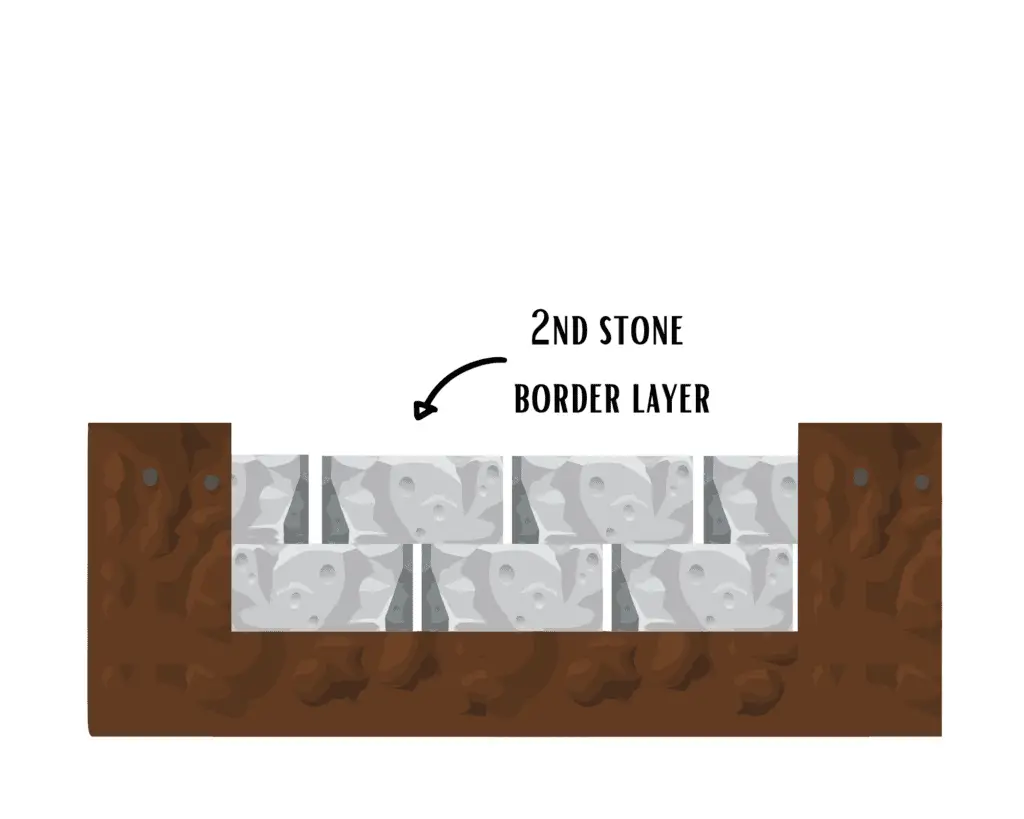
3. Stack the second layer on top of each slit of the first layer, i.e., where two stone bricks meet in the first layer, place a stone brick on top of this intersection. Keep stacking the next layer this way until you have filled the ground.
You can choose to stop the stonework there at the ground, so it shows a clear edging around the tree. Alternatively, you can add another layer, so you have a clear border around the tree.
4. Fill the inside of the stone border with a thin layer of your chosen gravel mulch over the landscape fabric. Ensure to leave about 2-3 inches of bare soil around the tree trunk. Otherwise, you risk suffocating the tree and making it susceptible to rot damage. It’s kind of like putting on make-up – looks good but having it on thick like a clown will suffocate your delicate pores (love your pores, my dudes).
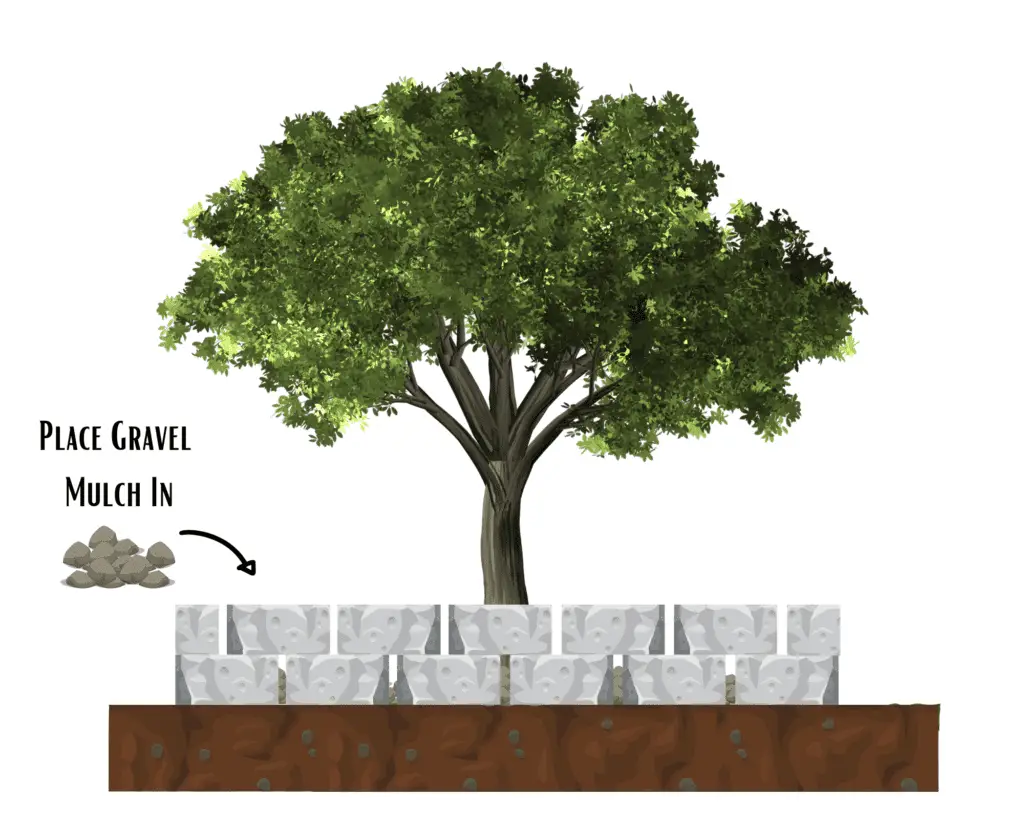
Note: You can choose to add soil instead of the gravel mulch and grow shade-tolerant plants underneath the tree. BUT remember that these plants will be competing for nutrition with the tree. Personally, I think the gravel mulch will be more than enough to decorate a tree.
Once everything is settled, water around your tree and on the rocks to clean off dirt and dust on it.
Hold on now! You may have some questions regarding what to put around your tree:
Helpful tips when it comes to landscaping around a tree:
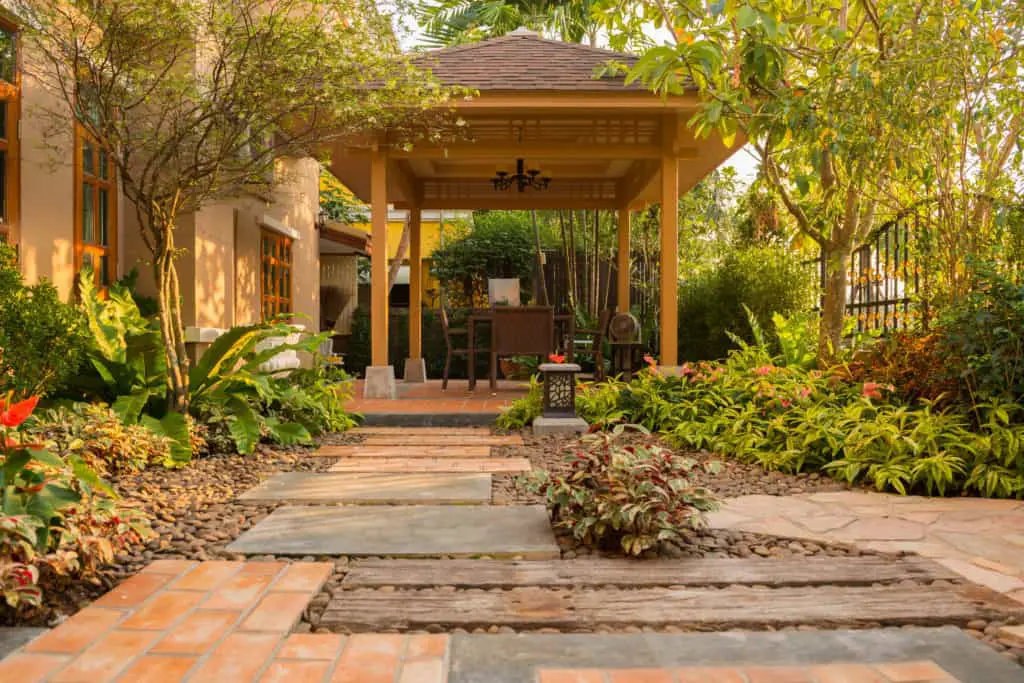
- Choose your rock size and type and determine the quantity you need to decorate around your tree before committing to the project. If you have a place where you can simply collect your rocks and add them to your yard, then that’s great! Although make sure you’re not breaking any community regulations when you’re doing so. Most people will opt to purchase their rocks, which may be a bit pricey, especially if you are not buying in bulk from a landscaping company. Prior designing and preparation will save you a lot of headaches before you get started.
- Always leave 2-3 inches of soil uncovered around the tree trunk. Cramming mulch or soil against the tree trunk is a BIG no-no. This will restrict proper air circulation around the tree, leading to possible rot damage. Once there is a wound in the trunk, pests and diseases can hop in and wreak havoc. Even if there are no apparent symptoms shown, the reality is the tree is slowly dying from the inside out and will eventually die.
- If the tree is grown on uneven ground, dig an even trench around the tree for your stone border. When placing stonework underground to create a border around the tree, it is critical to make sure it is leveled. Some may add concrete to ensure the border structure stays stable, but the stones are typically heavy enough to stay in place on their own.
- Pick shrubs or plants that are semi-shade to shade-tolerant so they can grow well underneath the tree’s shade. This is if you intend to plant anything under the tree, that is. Plants that require full sun may not develop well simply because they are not getting the necessary amount of sunlight to grow.
What can I put around the base of my tree?
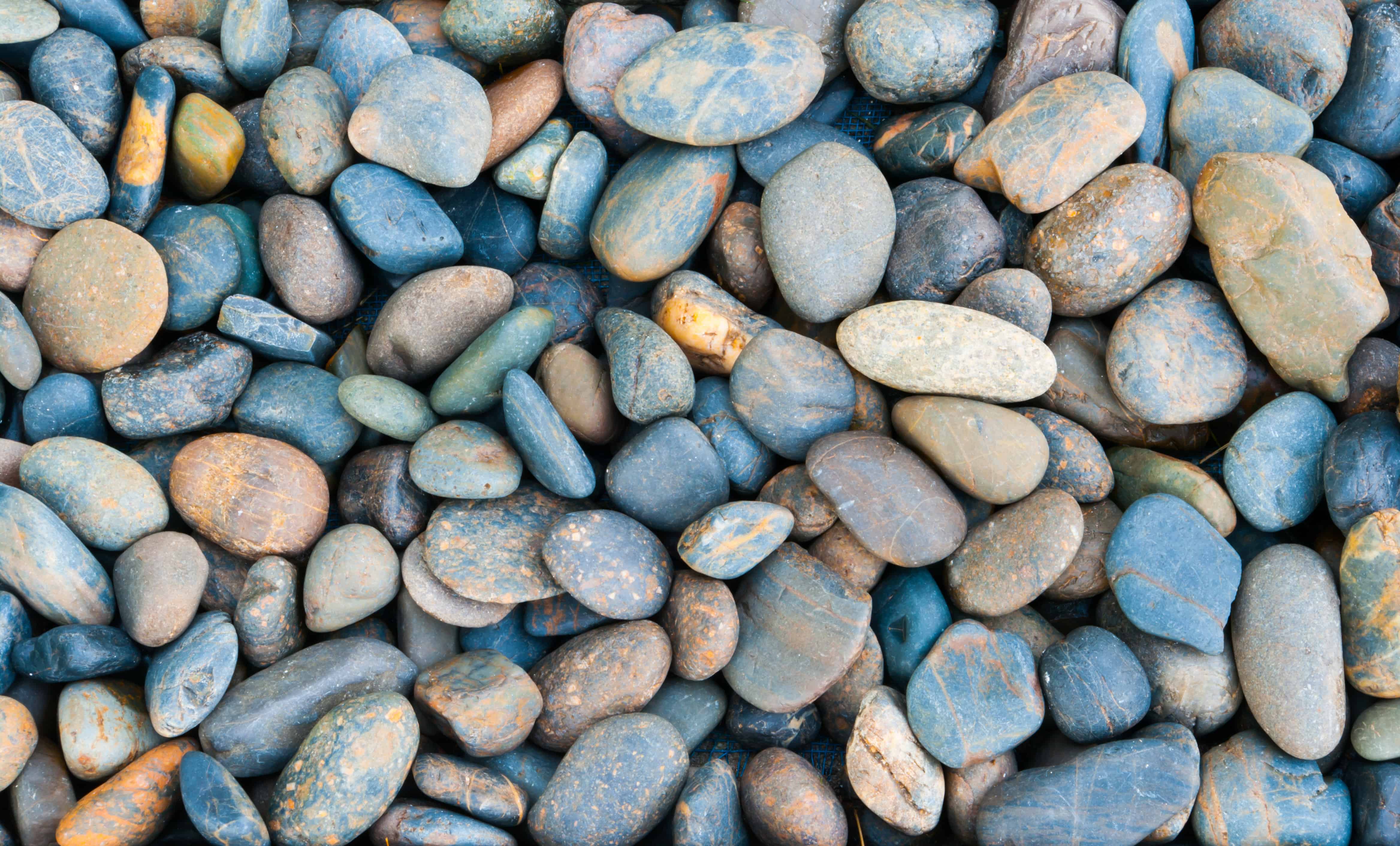
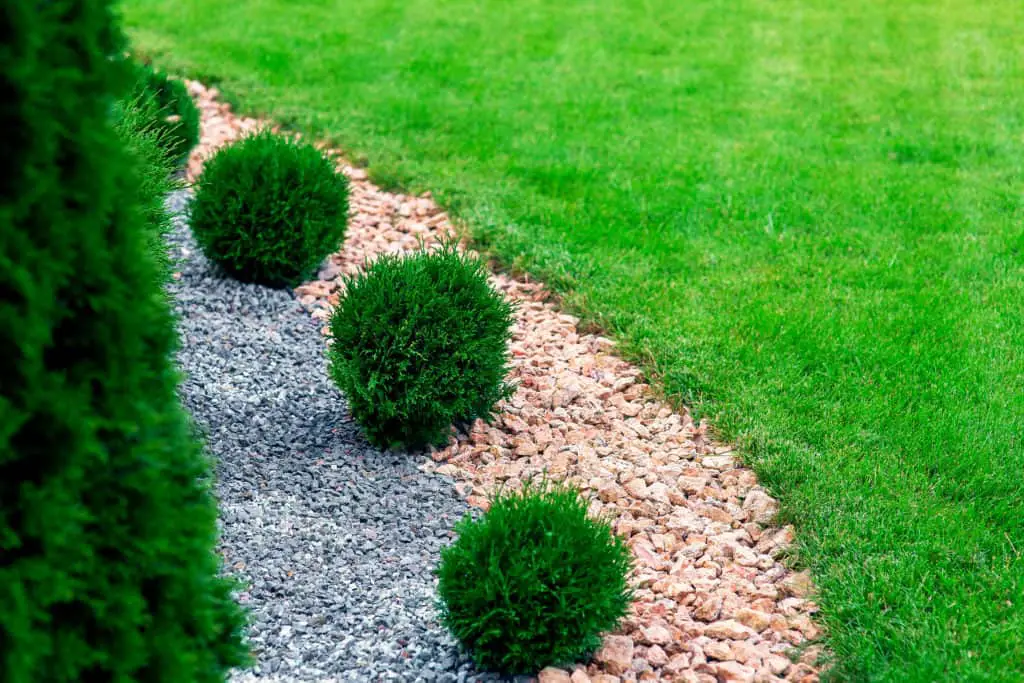
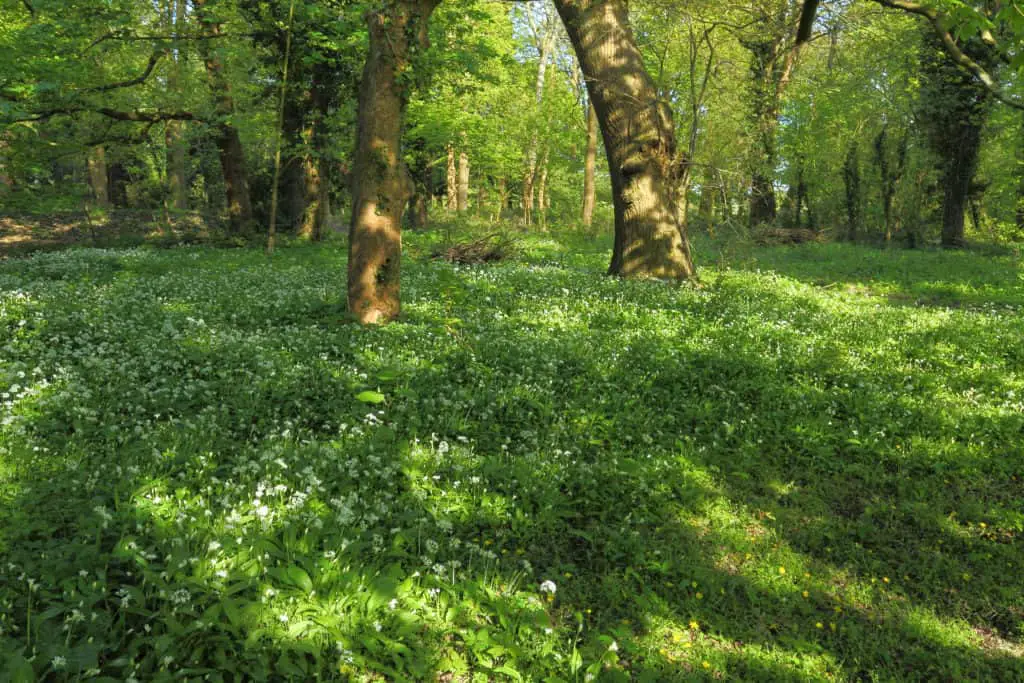
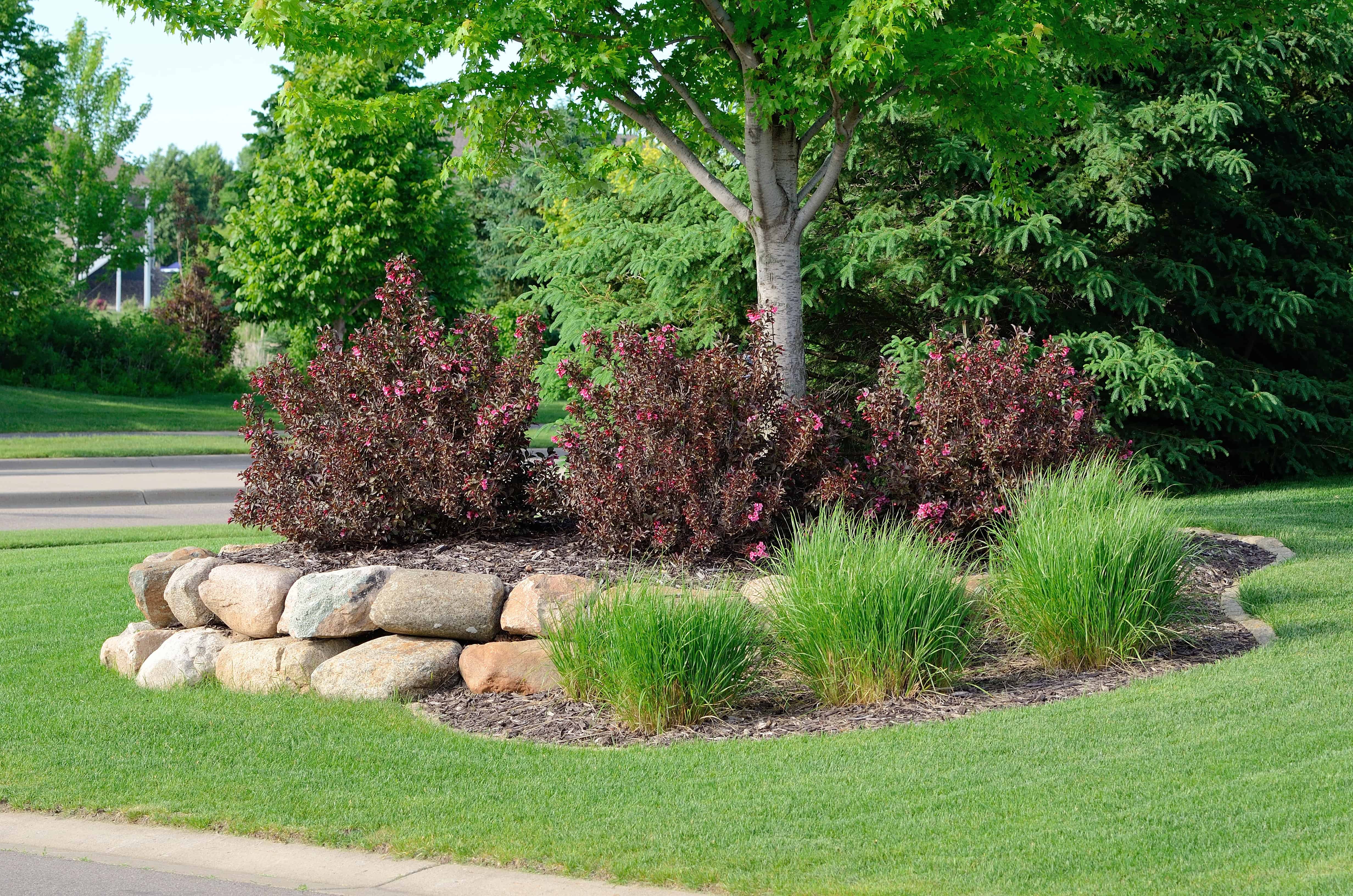
There are several decorative and functional options to place around a tree’s base:
- Rock edges with river stones, boulders, or flagstones.
- Mulch like dried bark, wood chips, or gravel.
- Ornamental grass.
- Groundcovers (low-lying plants) like periwinkles, wild violets, and hostas.
- Shade-tolerant plants like spiderwort, hydrangeas, and roses.
These help keep the soil from drying out, weeds from sprouting up, and achieve an overall neat appearance to a home’s landscape. But always remember to leave a minimum of 2-3 inches of bare soil around the tree trunk to allow good air circulation.
Is it better to put mulch or rocks around trees?
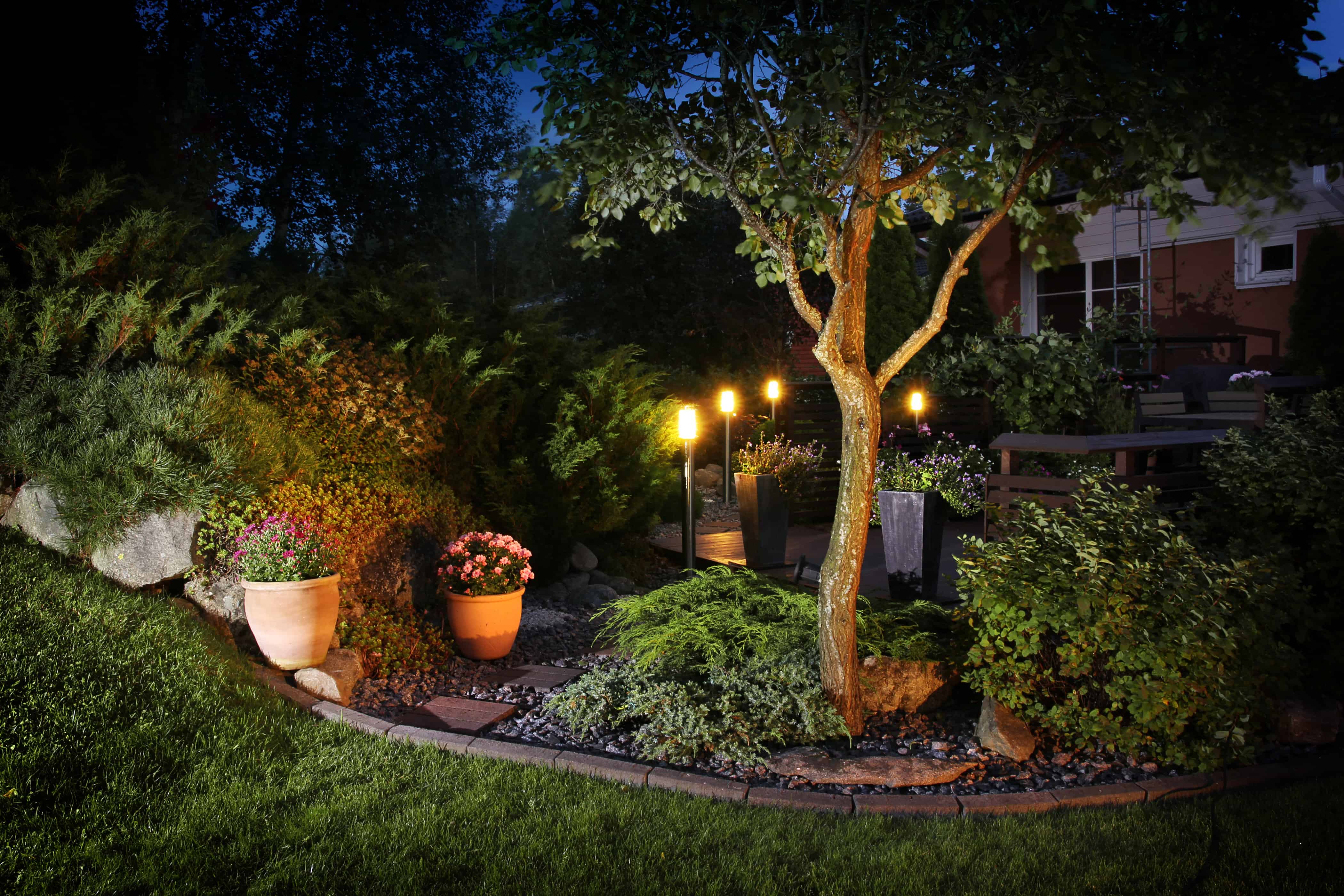
Inorganic mulch such as rocks and gravel are better to put around trees for long-term use and a no-maintenance approach. Organic mulch such as wood chips and dried bark is good for nourishing the soil when it breaks down, but it does mean it needs topping up yearly. Depending on your objective for using mulch around trees, whether rocks or dried bark, either option is good and has its pros and cons.
Is it ok to put rocks around trees?
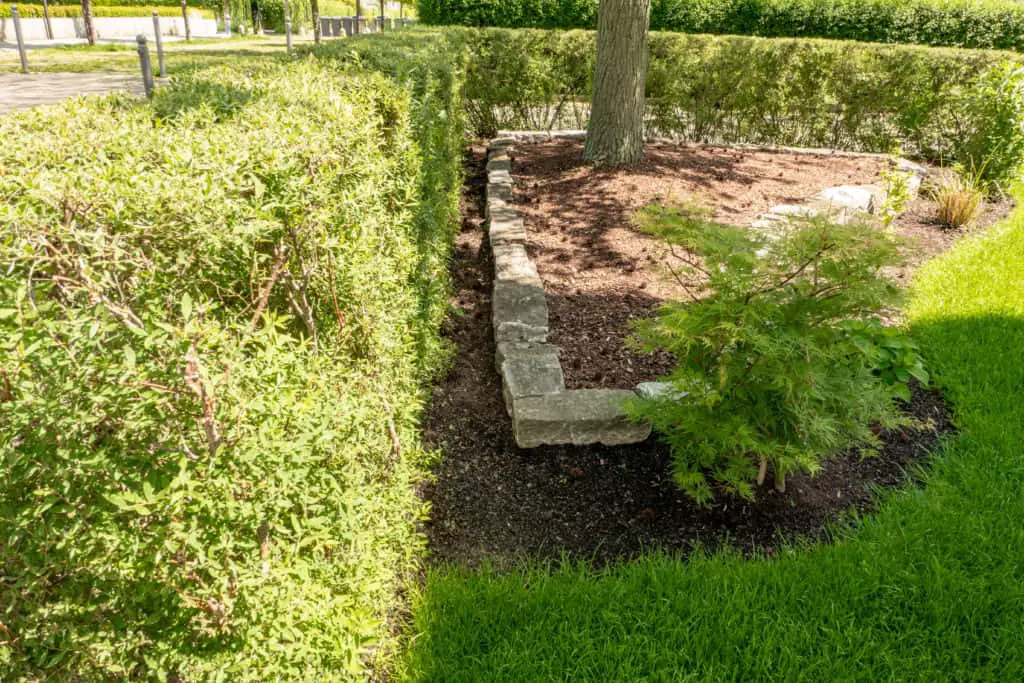
It’s perfectly alright to place rocks around trees as long as it is not weighing down on any surface tree roots heavily and there are 2-3 inches of uncovered soil around the tree trunk. Small rocks will help protect the tree as mulch, and bigger rocks as a border will reduce foot traffic. Foot traffic refers to how often the ground gets stepped on, compacting the soil underneath, which can be problematic for the tree’s roots.
What’s the benefit of landscaping a tree with rocks?
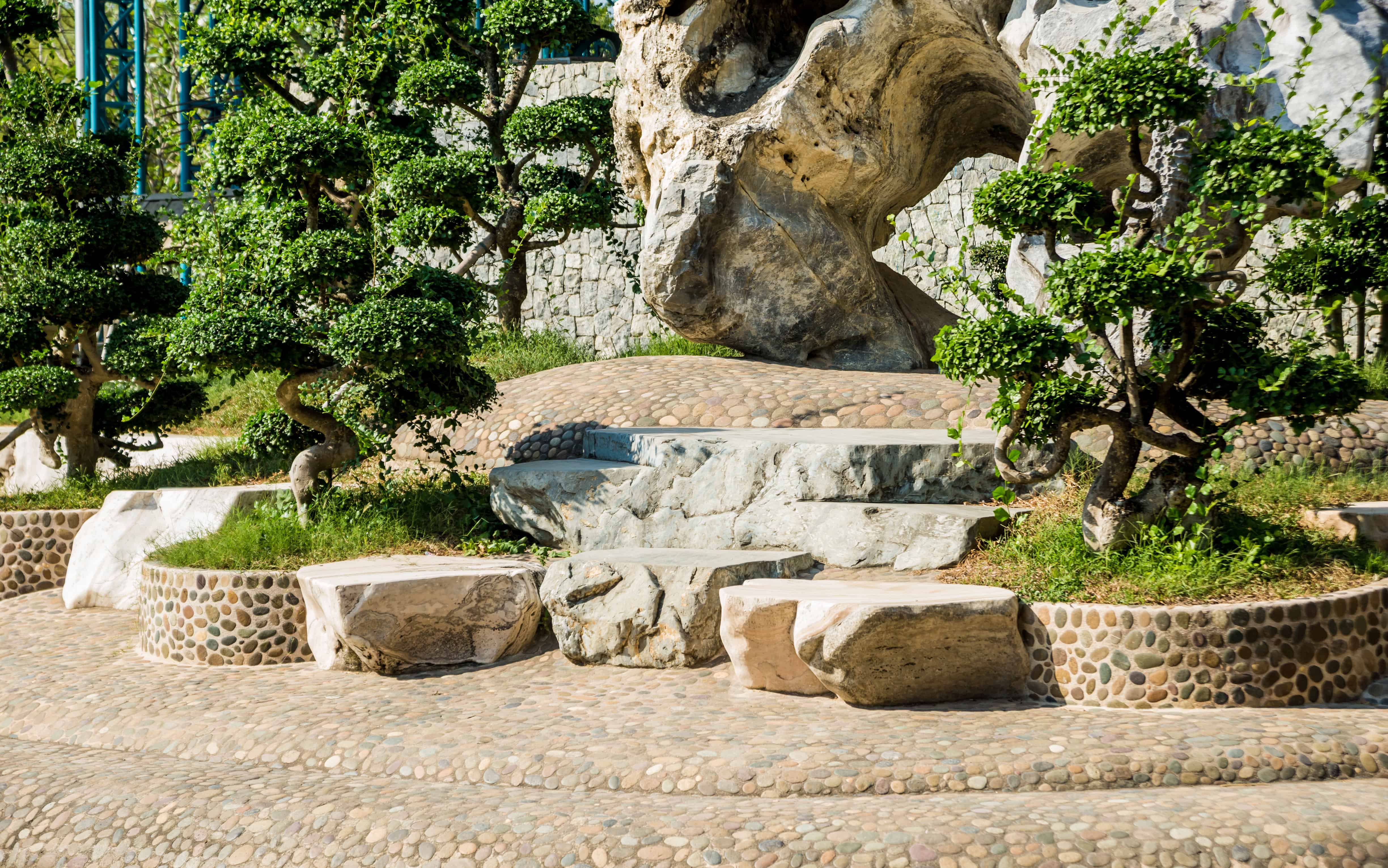
- Preventing damage to surface tree roots. Once the tree roots get damaged in any capacity, this could lead to the tree eventually dying. That’s because an open wound on the roots is an invitation for diseases and pests to attack the tree. Also, preventing people from tripping on the roots (as if the tree had something against them) and smashing their face is also advisable…
- Reduce foot traffic and soil compaction around the tree. With less people walking around the tree, the soil does not get as compacted which leaves the roots space to grow freely underground in search of moisture and nourishment.
- Adds a decorative aspect to your yard. Normally there’s a bare patch of soil around the tree which can be unsightly for some. This is because the tree roots have drawn out the nutrients within that area for its needs, so growing other plants there is not always possible. Adding aesthetic rocks around your tree will cover that bare area up.
Final Words
Landscaping around trees with rocks can be beneficial and fashionable to make your home attractive to passersby, guests, and yourself. While it is undoubtedly not a compulsory aspect of landscaping, it is a fun activity to do with your family. All you’ll need are rocks, a pair of extra hands, and more rocks! So care for your tree and give it a lovely rock wreath at its base to admire for generations to come.
References:
https://www.homedit.com/types-of-landscaping-rocks/
https://www.thespruce.com/what-is-mulch-1402413
https://www.houzz.com/discussions/3497009/are-river-rocks-around-mature-tree-trunks-ok
https://www.thespruce.com/english-boxwood-shrubs-2132072
https://blog.davey.com/2020/10/landscape-tree-ring-ideas/
https://nvslandscapes.com/landscaping/inspiration-for-landscaping-around-trees/
https://nature.berkeley.edu/garbelottowp/?qa_faqs=what-is-the-critical-root-zone
https://blog.davey.com/2018/07/pros-and-cons-of-landscape-fabric/


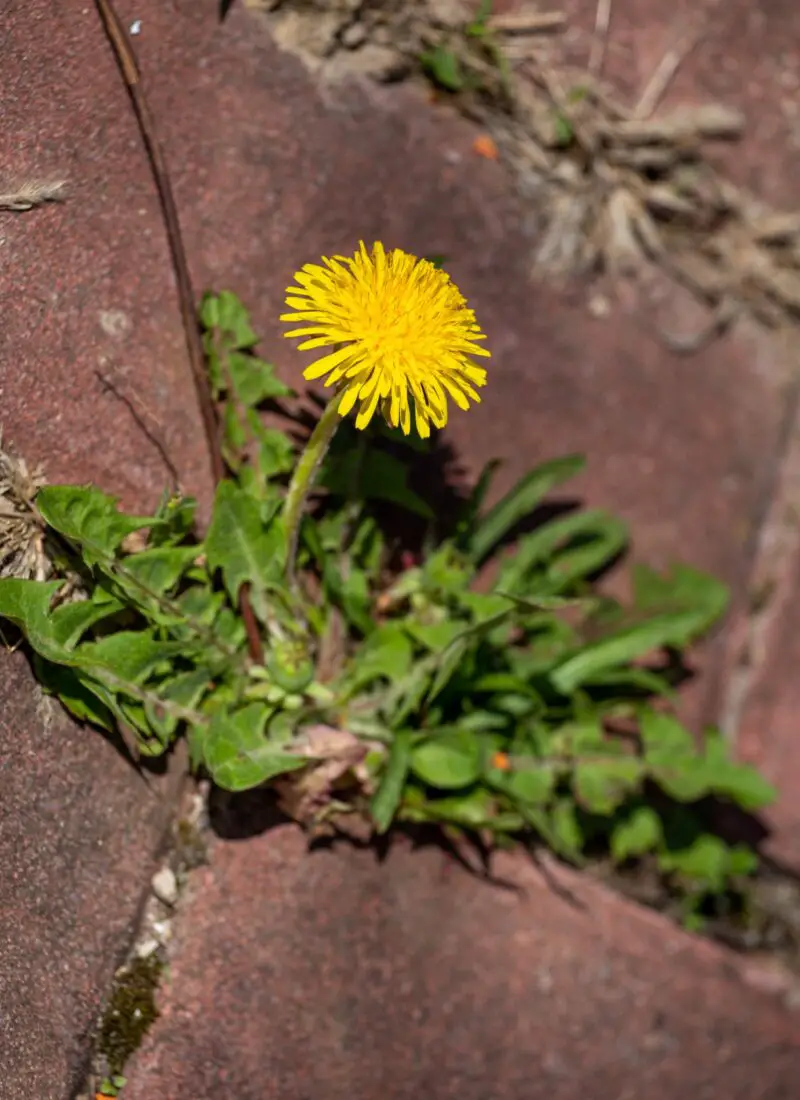
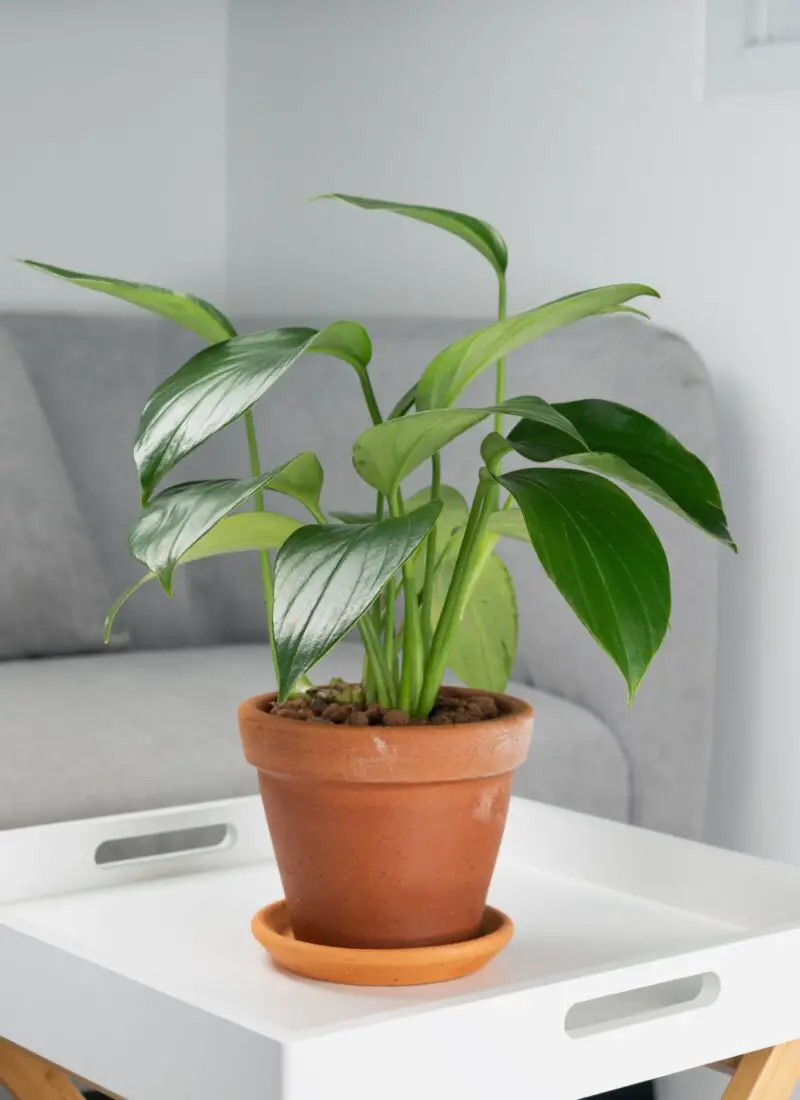
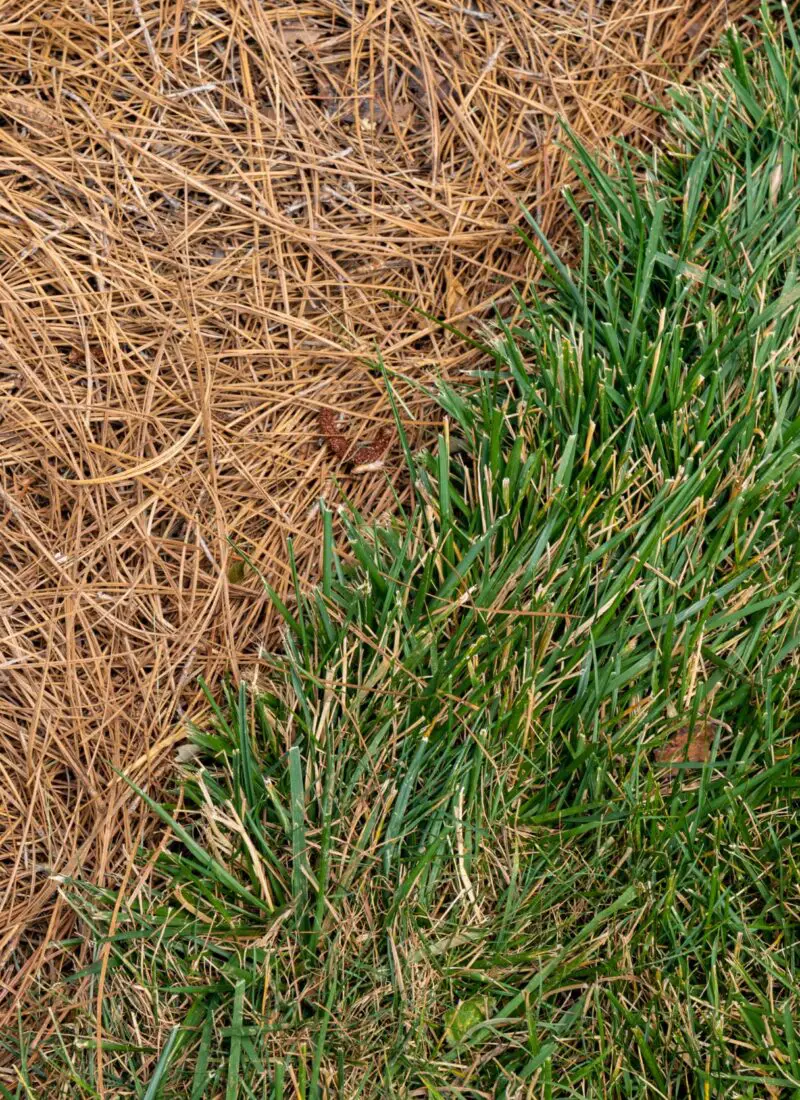

The idea of using rocks to surround a tree in order to keep it from getting messy is a really interesting idea to me. With that, it’ll be much easier for me to manage the way our garden looks and avoid having everything feel cluttered around the trees, the things I want to make the highlight of our property. I’ll go and look for a landscape expert in the area that can help us out with the layout of these kinds of materials for sure.